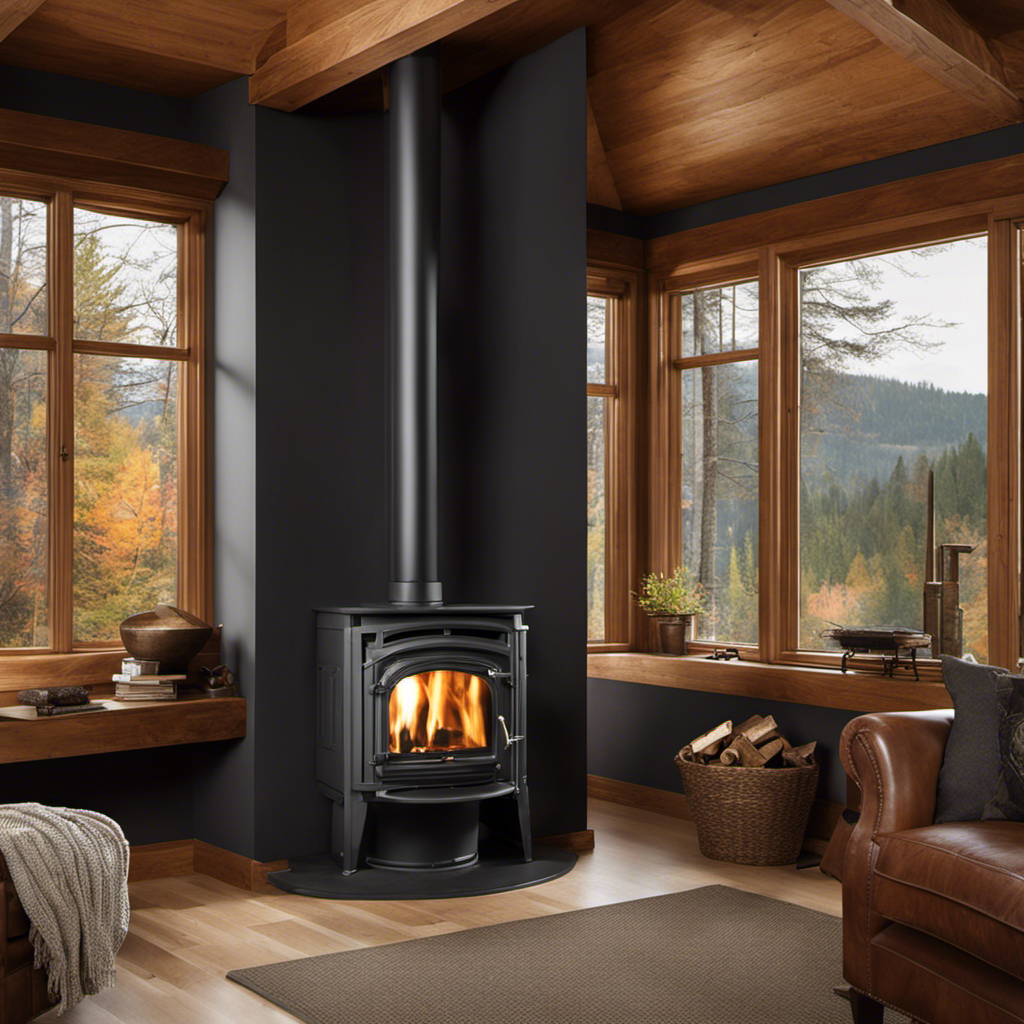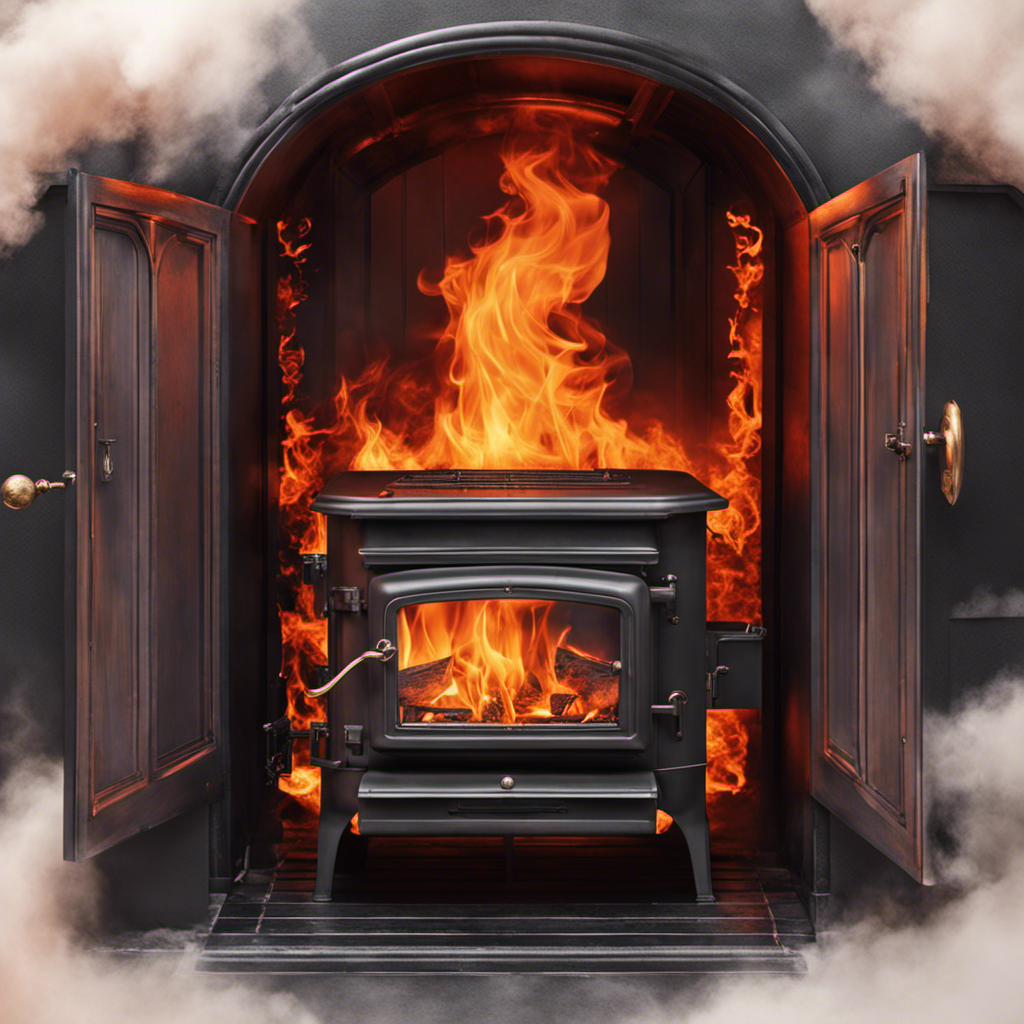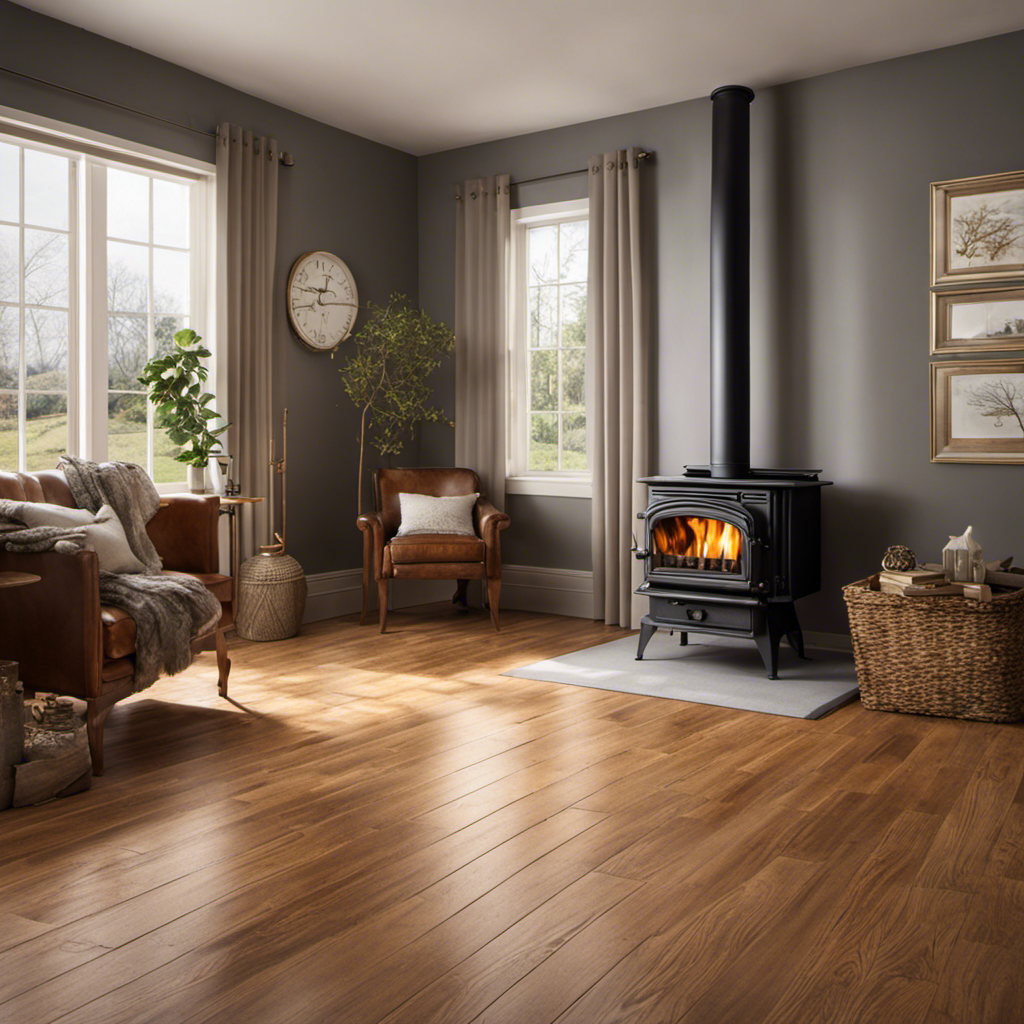Congratulations on deciding to tackle the job of installing wood stove pipes. Don’t be intimidated, it may seem challenging but it is absolutely achievable. With the proper tools and a bit of knowledge, you’ll have those pipes installed and working in no time.
In this guide, I’ll walk you through the step-by-step process of installing wood stove pipes, from choosing the right type of pipe to maintaining and cleaning them.
Let’s dive in and get your cozy wood stove ready for the chilly season ahead.
Key Takeaways
- Choose stainless steel pipes for durability and efficiency, with a smooth interior surface to minimize creosote buildup.
- Clear the area and accurately measure the distance and path for proper installation.
- Ensure proper sizing, clearances, sealing, and insulation to maximize efficiency and comply with regulations.
- Regularly maintain and clean the wood stove pipes, removing creosote buildup and inspecting for damage or blockage.
Necessary Tools for Installing Wood Stove Pipes
I’ll need a chimney brush to clean out the wood stove pipes before installation. Cleaning the pipes is an essential step to ensure proper airflow and prevent any potential hazards.
One of the common mistakes when installing wood stove pipes is neglecting this crucial cleaning process. It’s important to remove any debris, creosote, or obstructions that could hinder the efficiency and safety of the wood stove.
Safety precautions when working with wood stove pipes include wearing protective gloves and goggles to prevent any injury from sharp edges or falling debris. It’s also important to follow the manufacturer’s instructions and local building codes to ensure a safe and effective installation.
Taking these precautions will help guarantee a successful and trouble-free installation of the wood stove pipes.
Choosing the Right Type of Wood Stove Pipe
I recently researched the different types of wood stove pipes available and found that stainless steel pipes are the most durable and efficient option. Here are the advantages of using stainless steel pipes for your wood stove installation:
-
Durability: Stainless steel pipes are highly resistant to corrosion, rust, and heat damage, making them suitable for long-term use.
-
Efficiency: Stainless steel pipes have a smooth interior surface that allows for efficient airflow and minimizes the buildup of creosote, a flammable substance that can cause chimney fires.
-
Versatility: Stainless steel pipes come in various lengths and diameters, making them adaptable to different stove and chimney configurations.
When installing wood stove pipes, it’s important to avoid common mistakes such as improper sizing, inadequate insulation, and incorrect installation angles. By choosing stainless steel pipes and avoiding these mistakes, you can ensure a safe and efficient wood stove system.
Now that we’ve discussed choosing the right type of wood stove pipe, let’s move on to preparing the area for wood stove pipe installation.
Preparing the Area for Wood Stove Pipe Installation
Before beginning the wood stove pipe installation, it’s crucial to carefully and frequently measure the area to ensure a proper fit.
The first step is to clear the debris from the surrounding area, ensuring a clean and safe workspace. Remove any loose objects, such as furniture or rugs, that may obstruct the installation process.
Once the area is cleared, it’s time to measure the space accurately. Use a measuring tape to determine the distance between the stove and the wall or ceiling where the pipe will be installed. Take into account any bends or angles in the pipe’s path.
It’s important to measure multiple times to ensure accuracy and make any necessary adjustments before proceeding with the installation.
Step-by-Step Guide to Installing Wood Stove Pipes
Now, let’s carefully follow the step-by-step guide and securely connect the wood stove pipes using high-quality materials. When it comes to installing wood stove pipes, there are some common mistakes to avoid and important troubleshooting tips to keep in mind. Here are three key points to consider:
-
Proper Sizing: One common mistake is using the wrong size of pipes. It’s crucial to ensure that the diameter of the pipes matches the requirements of your wood stove. Using pipes that are too small can lead to poor airflow and inefficient heating, while pipes that are too large can result in excessive heat loss. Measure carefully and consult the manufacturer’s guidelines for the correct dimensions.
-
Clearances and Safety: Another mistake to avoid is improper clearances. It’s important to maintain the recommended distance between the wood stove pipes and combustible materials such as walls, floors, and ceilings. Failure to do so can pose a fire hazard. Be sure to follow the local building codes and regulations to ensure a safe installation.
-
Sealing and Insulation: Proper sealing and insulation of wood stove pipes are essential to prevent leaks and maximize efficiency. Use high-quality sealing materials, such as fire-resistant caulk or tape, to secure the joints between pipes. Additionally, consider insulating the pipes with non-combustible insulation to reduce heat loss and improve overall performance.
Tips for Maintaining and Cleaning Wood Stove Pipes
To maintain and clean wood stove pipes, it is important to regularly remove creosote buildup and inspect for any signs of damage or blockage. Creosote is a byproduct of burning wood and can accumulate inside the pipes, posing a fire hazard. Here are some tips for preventing creosote buildup and troubleshooting common issues with wood stove pipes:
| Tips for Preventing Creosote Buildup | Troubleshooting Common Issues |
|---|---|
| Use seasoned hardwood instead of green or wet wood | Check for obstructions in the pipes |
| Burn hot fires to reduce creosote buildup | Inspect for cracks or gaps in the pipes |
| Have your chimney professionally cleaned and inspected annually | Check for signs of corrosion or rust |
| Install a chimney cap to prevent debris from entering | Ensure proper ventilation and airflow |
Conclusion
In conclusion, installing wood stove pipes requires the right tools, choosing the right type of pipe, and proper preparation of the installation area.
By following the step-by-step guide and maintaining and cleaning the pipes regularly, you can ensure the safe and efficient operation of your wood stove.
Remember to always prioritize safety and consult a professional if needed.
With these tips, you can enjoy the cozy warmth and ambiance of a wood stove in your home.
Growing up surrounded by the vast beauty of nature, Sierra was always drawn to the call of the wild. While others sought the comfort of the familiar, she ventured out, embracing the unpredictable and finding stories in the heartbeat of nature.
At the epicenter of every remarkable venture lies a dynamic team—a fusion of diverse talents, visions, and passions. The essence of Best Small Wood Stoves is crafted and refined by such a trio: Sierra, Logan, and Terra. Their collective expertise has transformed the platform into a leading authority on small wood stoves, radiating warmth and knowledge in equal measure.











